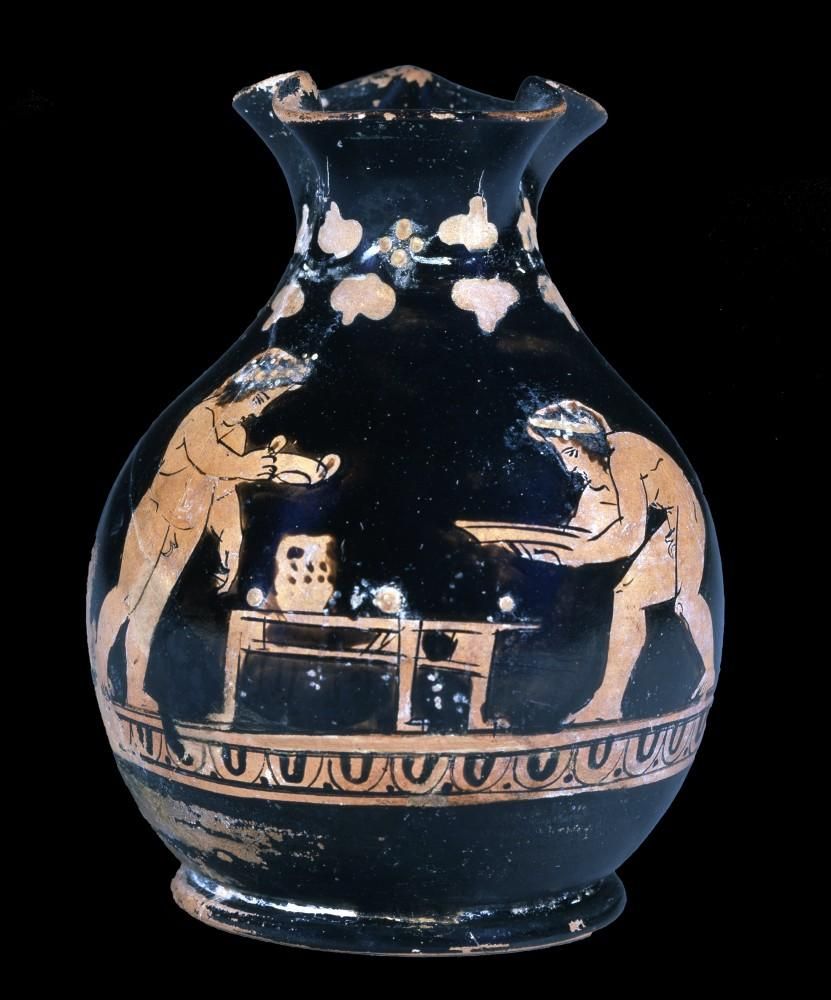Although contemporary Greek cuisine is often associated with rich meats, seafood, and dairy products, there is a rich history of vegan elements woven throughout traditional Greek cooking since ancient times.
LET’S START AT THE BEGINNING: THE ANCIENT GREEK CUISINE
Ancient Greek cuisine was characterized by its frugality. It was largely based on the “Mediterranean triad” of cereals (mainly wheat and barley), olives, and grapes, and leaned heavily towards consuming legumes and nuts. Olive trees have been grown and harvested in Greece since at least the mid-4th millennium BC, likely earlier, and the “golden liquid” of the Greek land, e.g.olive oil, was traded across the length and breadth of the Mediterranean throughout antiquity.
Ancient Greeks had simple meals and eating habits. They started their days with plain breakfasts of bread dipped in wine called akratisma, which was sometimes complemented by figs, dates, or olives. They also ate a sort of fried pancake called tiganitis, still popular as a breakfast today after 2.500 years!
Around noon or shortly after, they would have a quick meal called ariston with bread, olive oil, cheese, and fruit, and a snack called esperisma before their most important meal of the day, dinner or deipnon which included a selection of legumes, as well as bread, cheese, olives, eggs, fruits, and nuts.
Soups, made from lentils—the workman’s dish—beans, and vegetables (onions, garlic, cabbage, and turnips), would have also been a regular feature in their diet.
Meat consumption was rare due to its perceived barbarism, while fresh and salted fish were more popular sources of nutrition. This trend continued in Roman and Ottoman times and changed only fairly recently when technological progress made meat more readily available.
Other sources of animal protein included milk and cheese, from sheep and goats, and oxygala, an early ancestor of yogurt.
Dessert consisted of fresh or dried fruits, honey, and nuts, while wine was the basic drink of ancient Greeks. They always added water to their wine to prevent dizziness. Drinking unmixed wine was considered a barbaric habit likely to lead to madness and death. For them, wine consumption was considered helpful in liberating their thoughts and feelings and creating meaningful conversations. The ancient Greeks also sweetened their wine with honey and made therapeutic concoctions by adding thyme, pennyroyal, and other herbs.
PYTHAGORAS: THE FATHER OF VEGANISM?
The concept of veganism in Greece isn’t just a modern trend. Rooted in the ethical treatment of animals and the environment, it can be traced back to the philosophical teachings of Pythagoras in the 6th century BC and Plato in the late 5th century BC. Pythagoras, in particular, was a vocal advocate for animal rights and the benefits of a plant-based diet.
THE FIRST FUSION CUISINE AND THE FIRST COOKBOOK IN THE WORLD
In 334 B.C., Alexander the Great extended the Greek Empire’s reach from Europe to India. As a result, certain northern and eastern influences were absorbed into the Greek culinary repertoire, making it the very first example of “fusion’ cuisine.
Archestratus, a poet and philosopher from ancient Greece, is credited with writing the first cookbook in history in 320 B.C. Known as the Father of Gastronomy, Archestratus wrote a humorous didactic poem called Hedypatheia that offered advice on finding the best food in the Mediterranean and revealed secrets of ancient Greek cuisine.
Archestratus is also credited with coining the term “gastronomy,” which means “Rules (-nomy) of the Stomach (gastro).” He presented five golden rules about cooking and eating that remain valuable today, including using high-quality raw materials, combining ingredients harmoniously, avoiding hot sauces and spices, preferring lighter sauces, and using spices in moderation.
OLIVE RELISH: AN ANCIENT GREEK VEGAN RECIPE!
‘How to make green, black, or mixed olive relish. Remove stones from green, black, or mixed olives, then prepare as follows: Chop them and add oil, vinegar, coriander, cumin, fennel, rue, and mint. Pot them: the oil should cover them. Ready to use.’
Cato, On Agriculture 119
The recipe from Cato dates to about 200 BC, but olives provided relish and flavouring all through ancient times. At classical Greek banquets, olives were served in brine, and sometimes, no doubt, they were served as relishes like this.
Cato’s recipe uses cumin, but it can overpower the herbs, so it is listed as optional below. Fennel leaf will not always be easy to find, so the chopped root will serve as a substitute.
Serves 4
Ingredients:
120g black olives
120g green olives
4 tbsp red wine vinegar
4 tbsp extra virgin olive oil
1 heaped tsp chopped fennel leaf or finely diced fennel root
1/2 level tsp ground cumin (optional)
2 tsp chopped fresh coriander
2 tsp dried or chopped fresh rue (you can use a bitter herb or spice such as fenugreek seed as a substitute)
2 heaped tsp dried or 3 tsp chopped fresh mint




